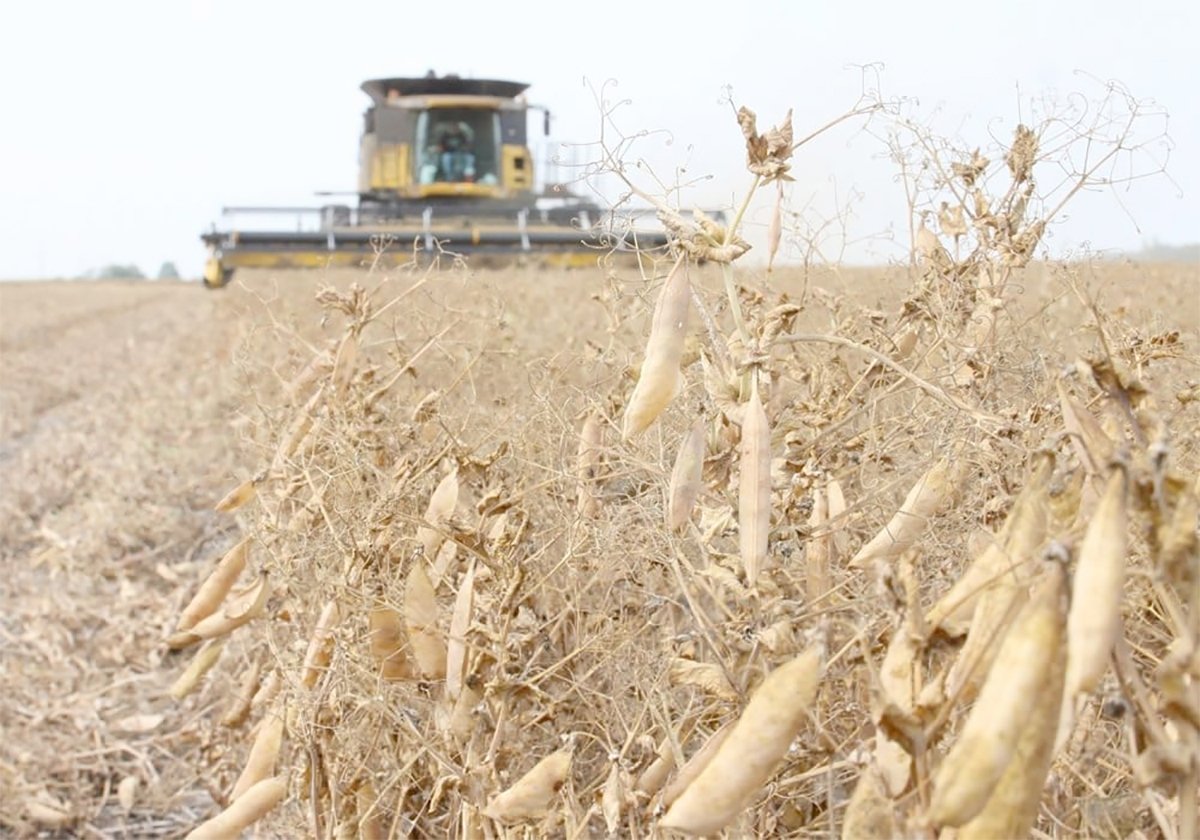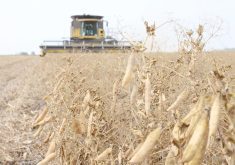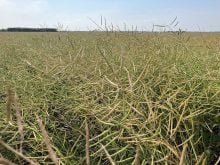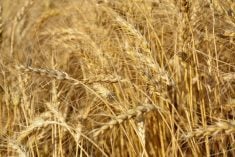RED DEER – Putting up good silage starts in the field.
“If you are not starting with high quality forage, all the equations won’t work,” Limin Kung, a forage specialist from Delaware University, told the Western Dairy Seminar in Red Deer March 13.
“If you start with straw, no matter what you do, you’ve got straw.”
Poor field management and damage from birds, insects and unpredictable weather contribute to poor quality silage.
Cows may eat less when offered poor feed, which reduces milk production and forces producers to offer more expensive feed concentrates to keep the cow working.
Read Also

Chinese, Indian tariffs take toll on pea prices
The disruption of pea exports from Canada’s largest customers will likely result in slow pea exports for the remainder of the crop year.
Kung reminded producers that nutrients can be lost as soon as the crop is harvested. Cut grasses and legumes continue living in the windrow, which means quality can be lost from plant respiration.
Instead of keeping windrows in tight rows, he recommended spreading them out to speed drying.
Cutting crops too late may increase silage yield because plants are bigger but the compromise is loss of essential nutrients.
Once the crop ends up in the silage pit, further losses result from improper fermentation, seepage and spoilage. Ten to 40 percent of dry matter nutrients can be lost because of poor management.
Ensiling crop that is too wet can run the risk of colistridial fermentation, more acid and more nutrient runoff. Ensiling it when it is too dry can result in more spoilage, lower digestibility and heat damaged protein.
Exposure to the air is silage’s worst enemy. It could delay fermentation and stimulate growth of yeast, which results in spoilage or nutrient break down.
Mould could be next, but it’s too late by the time someone sees it in the silage. Aspergillus fumigatus is a dangerous mould that is detrimental to cows, causing hemorrhagic bowel syndrome.
“You can’t see the yeasts but you will see the moulds,” he said.
“If you see mushrooms growing in your silage, you know you have a big problem.”
Minimum air exposure is required to stop or slow the problem.
Chopped forages need to be packed immediately and cured for four to six weeks. The longer it ensiles, the more digestible it is.
Kung recommended using a heavy weight tractor to pack silage in small, 15 to 20 centimetre thick layers to remove the air and aim for 220 to 270 kilograms of dry matter per cubic metre.
Tightly packed silage results in better fermentation and more storage capacity in the pile. It also decreases the chance of yeast multiplication.
Silage piles should be sorted by quality. Do not pile poorer quality on top of good product. The largest side of the pile should face the sun.
Producers should cover a pile with heavy weight plastic within an hour of completion and put tires or gravel bags on top. White plastic is better than black and two layers are better than one.
They should also tuck plastic into the sidewalls and take care to cover seams and edges to prevent air seepage.
Reusable tarps are coming to North America, but they may be hard to roll back when covered with heavy snow.
Oxygen barrier plastic may be best suited for silage that must be stored for a long time. However, it is thin and does not provide ultraviolet light protection. As a result, it may need to be covered with a second layer of polyethylene plastic.
Inoculants are also available to prevent bacterial spores or yeast formation in alfalfa or grass silages, especially when there is a risk of greater aerobic activity.
High dry matter silage with large exposed surfaces usually have greater problems with aerobic stability and may benefit more from lactobacillus buchneri inoculants.















